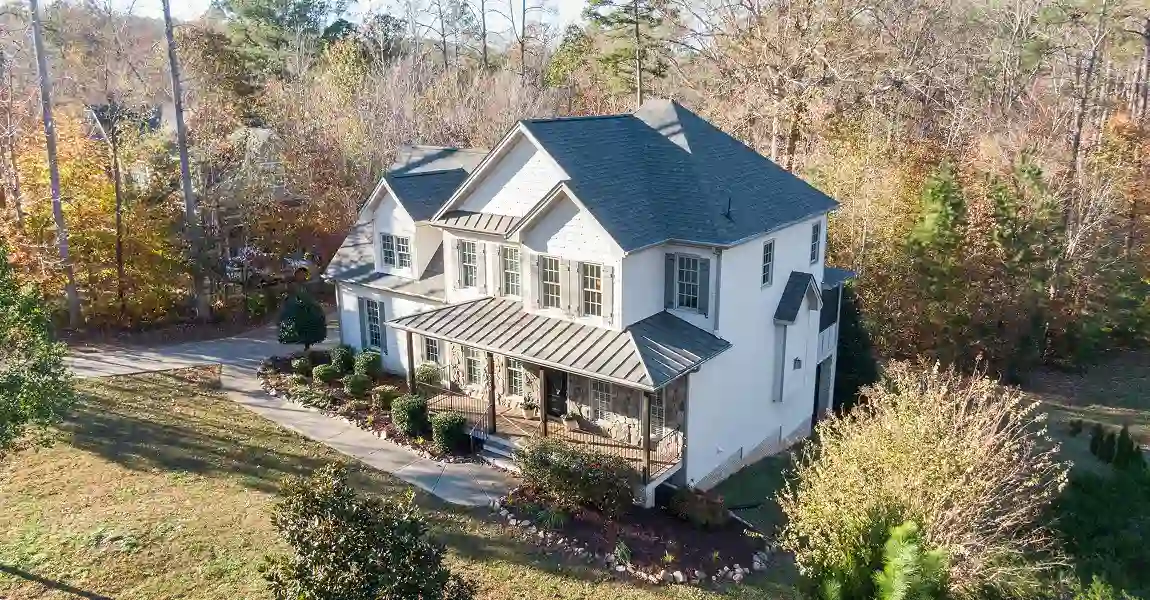Owning a historic home isn’t just about having a place to live—it’s about preserving a piece of history. These homes have stories etched into every brick, window, and wooden beam. Their roofs, in particular, have sheltered generations of families through storms, scorching summers, and freezing winters.
But like any aging structure, even the most well-crafted historic roofs don’t last forever. They develop leaks, lose shingles, or simply begin to weaken with time. If your home’s roof is starting to show signs of wear, replacing it with modern materials might seem like the easiest solution—but that could dramatically reduce your home’s historical and financial value.
That’s where historical roof restoration comes in.
A carefully restored roof does more than protect your home from the elements—it safeguards the property’s character, maintains its market value, and ensures that it continues to tell its story for generations to come. If you’re a homeowner in North Carolina, where towns like Raleigh, Asheville, and Wilmington are home to countless historic homes, it’s crucial to choose the right approach when caring for your roof.
Let’s look at why restoring, rather than replacing, your historic roof is often the best choice.
Your Roof is a Vital Part of Your Home’s History
Think about it: Would you replace a century-old stained-glass window with a modern one just because it had a crack? Probably not. You’d look for an expert who could restore it while keeping its original character intact.
Your roof deserves the same treatment.
What Makes a Historic Roof Unique?
- Handcrafted materials: Many older homes feature materials like wood shakes, clay tiles, slate, or copper—all of which were made to last but require expert care.
- Distinctive designs: Steep gables, ornamental ridges, or decorative eaves all contribute to a historic home’s beauty.
- Skilled craftsmanship: Unlike today’s mass-produced roofing materials, older roofs were carefully built by artisans using techniques passed down through generations.
By restoring your roof with historically accurate materials, you help preserve both the craftsmanship and cultural heritage of your home.
Local Consideration:
If you own a historic property in Charlotte’s Fourth Ward or Durham’s Historic District, local regulations often require restoration instead of replacement to maintain neighborhood integrity.
A Restored Roof Increases Property Value
Historic homes have high market demand, but buyers want authenticity. If you replace a historic roof with modern asphalt shingles, you could decrease your home’s resale value—not to mention risk violating local preservation guidelines.
Why Restoration is the Smarter Investment:
✔ Boosts curb appeal: A beautifully maintained historic roof is a standout feature in any neighborhood.
✔ Maintains home value: A restored roof can keep your property’s market price higher than similar homes with modernized materials.
✔ Qualifies for tax incentives: Many state and federal programs offer grants or tax breaks for homeowners who choose preservation over replacement.
Real-World Example:
In Asheville’s Montford Historic District, homes with original slate or cedar shake roofs are appraised significantly higher than those that replaced them with synthetic materials. Buyers recognize the value of authenticity.
A Well-Restored Roof Lasts Longer Than You Think
Many people assume that old roofing materials are weaker than modern ones—but that’s not necessarily true. In fact, historic roofing materials were often built to outlast modern options.
A properly restored slate, tile, or metal roof can last 50-100 years, far exceeding the 15-30 years you’d get from an asphalt shingle replacement.
What Restoration Can Do:
- Reinforce existing materials so they last another several decades.
- Replace missing or broken pieces with historically accurate materials.
- Seal leaks and strengthen the structure to prevent long-term damage.
North Carolina Weather Factor:
In Wilmington and New Bern, where hurricanes and coastal moisture can accelerate roof wear, restoration techniques can help historic roofs better withstand extreme weather.
Restoration Helps You Meet Historic District Regulations
If your home is part of a designated historic district, restoration isn’t just an option—it may be required. Many North Carolina cities have regulations that prohibit using modern materials on historic structures.
Why This Matters:
- Avoids fines or legal issues related to unauthorized roof replacements.
- Helps your home qualify for local grants or funding for preservation projects.
- Ensures your home remains historically and architecturally accurate.
Example:
Homes in Edenton’s Historic District must adhere to strict restoration standards set by the local preservation commission. Working with professionals who specialize in historical roof restoration ensures you stay in compliance.
A Restored Roof is More Energy-Efficient Than You’d Expect
Many homeowners worry that keeping an older roof means sacrificing modern energy efficiency—but that’s not necessarily true. Restoration allows you to upgrade insulation and ventilation without compromising the home’s historical design.
Energy-Saving Benefits of Restoration:
- Adds modern insulation beneath the original roof for better temperature control.
- Improves ventilation, preventing trapped heat in summer and moisture buildup in winter.
- Uses reflective coatings on metal or slate roofs to keep homes cooler.
Local Example:
In Greensboro’s Fisher Park Historic District, restored tile roofs with modern insulation improvements have reduced homeowners’ energy costs by up to 20%.
Why Your Historic Home Deserves a Restored Roof
Your home’s roof is more than just a functional necessity—it’s a defining feature of your home’s history. Choosing restoration over replacement ensures that your home retains its character, value, and longevity.
Key Takeaways:
✔ Preserve the craftsmanship that makes your home unique.
✔ Protect property value by maintaining historical integrity.
✔ Extend the lifespan of your roof with professional restoration techniques.
✔ Meet local preservation laws and avoid costly fines.
✔ Improve energy efficiency while keeping your home authentic.
If your historic roof is in need of care, work with a team that understands the importance of historical accuracy. At Citadel Contracting, we specialize in historical roof restoration to ensure your home remains a lasting piece of history.










